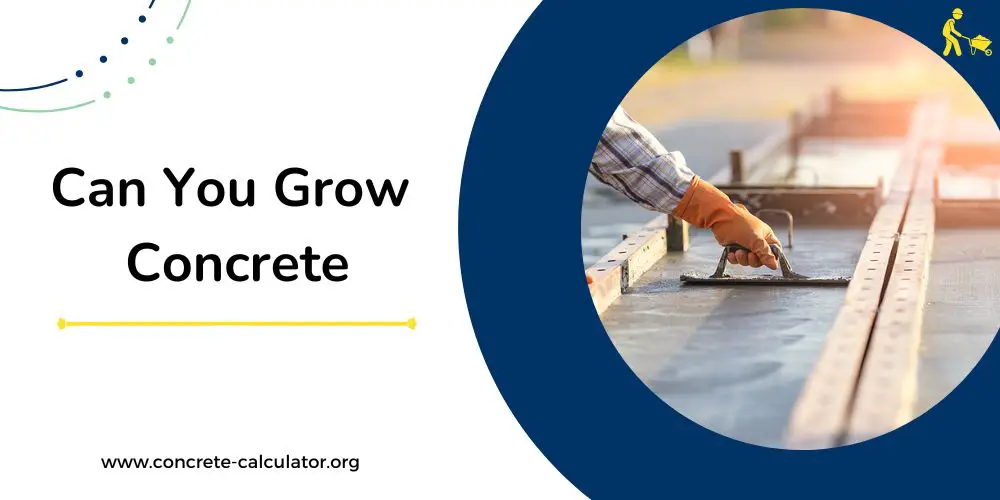Science has given the world so many wonders, and one of them is the ability to manipulate matter to create materials that are stronger and more durable than current ones. When it comes to construction, concrete is the most widely used material, and it’s easy to understand why – it’s cheap, readily available, and easy to work with.
However, researchers are constantly looking for ways to make concrete even better, and one idea that has been floating around recently is growing it. Yes, that’s right, growing concrete. In this blog post, we’ll explore the question – can you grow concrete?

Use the Concrete Footing Calculator to always have exact amount of concrete needed for the project.
Is It Possible To Grow Concrete?
First things first, let’s clarify what we mean by “growing” concrete. When we talk about growing concrete, we don’t mean actual growth like plants. What we’re really talking about is the use of bacteria to produce concrete-like materials that have higher durability and strength than traditional concrete. The process is known as biomineralization, and it’s been around for over a decade.
The idea is that certain types of bacteria can turn calcium carbonate into calcium carbonate nanoparticles, which can then be used to create strong concrete structures. These bacteria are attracted to calcium ions, which are commonly found in concrete. The bacteria produce an enzyme that creates calcium carbonate, which binds to the concrete. Over time, this process can increase the strength and durability of the concrete structure.
However, there are several challenges to growing concrete using bacteria. One of the biggest challenges is controlling the growth process. The bacteria need a specific environment to thrive, and if the conditions are not right, the process will not work. Additionally, the bacteria need to be able to produce enough calcium carbonate to make a significant impact.
Another challenge is the time it takes to grow concrete using bacteria. Traditional concrete can be produced in a matter of hours while growing concrete using bacteria can take several days or even weeks. This could be a significant drawback for construction projects that require a quick turnaround time.

Despite these challenges, researchers continue to explore the use of bacteria to grow concrete. The potential benefits are significant – stronger and more durable concrete could mean safer buildings and infrastructure. Additionally, the use of bacteria could reduce the carbon footprint of concrete production, as traditional concrete production is a significant source of greenhouse gas emissions.
Also Read: Concrete For Footings
Conclusion on Growing Concrete
So, to answer the question – can you grow concrete? – the answer is yes, but with some limitations. While growing concrete using bacteria has the potential to create stronger and more durable structures, there are challenges to the process, including the need for specific growth conditions and the time it takes to produce.
However, as research continues, it’s possible that growing concrete using bacteria could become a more common practice in the construction industry, leading to stronger, safer, and more sustainable structures.
FAQ’s
Can bacteria be used to grow concrete?
Yes, bacteria can be used to grow concrete. However, this process has its own set of challenges, including the need for specific growth conditions and the time it takes to produce.
What are the benefits of growing concrete using bacteria?
Growing concrete using bacteria could lead to stronger and more durable structures, as well as a reduced carbon footprint. Additionally, it could reduce the amount of concrete needed for construction projects.
How long does it take to grow concrete using bacteria?
The time it takes to produce concrete using bacteria can vary, but typically ranges from several days to even weeks, depending on the conditions.
Related Post: Concrete Compression Test

